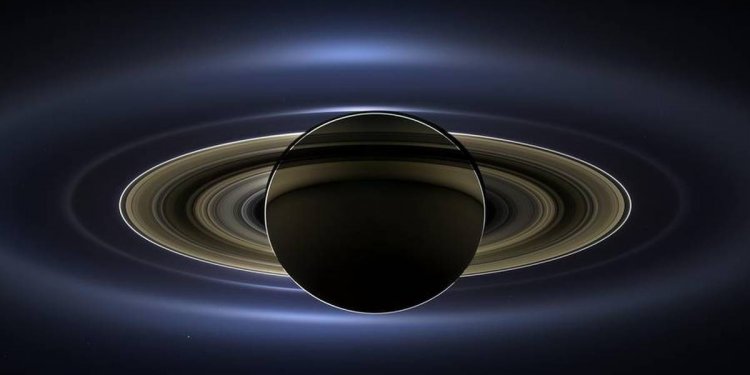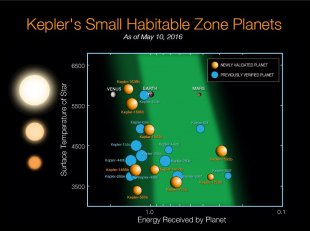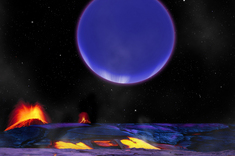
NASA space discoveries
 Credit: Karl Tate, SPACE.com contributor
Credit: Karl Tate, SPACE.com contributor
This NASA chart shows the number of confirmed alien planets arranged by their size, as of May 10, 2016.
Credit: NASA Ames/W. StenzelThe $600 million Kepler mission launched in March 2009, tasked with determining how common Earth-like planets are throughout the Milky Way. The observatory finds alien worlds by noticing the tiny brightness dips caused when the planets cross the face of, or transit, their host stars from Kepler's perspective.
Kepler conducted its original planet hunt until May 2013, when the second of the telescope's four orientation-maintaining reaction wheels failed, robbing the observatory of the precise pointing ability needed to spot transiting planets. During this prime mission, Kepler found more than 4, 000 planet "candidates" that needed to be confirmed by follow-up work.
Previously, astronomers had usually attempted to validate Kepler finds by observing the candidates using ground-based instruments. But the team behind today's announcement took a statistical approach, devising a confirmation method based on probability. [Gallery: A World of Kepler Planets]
This technique relies on computer simulations to determine how likely it is that a particular brightness dip was caused by a bona fide planet, as opposed to an "imposter" such as a star or brown dwarf. (A brown dwarf is a "failed star, " too big to be a planet but too small to undergo nuclear fusion reactions in its interior.)
The team, led by Tim Morton of Princeton University in New Jersey, applied this statistical method to every one of the candidates spotted during Kepler's original mission. The researchers confirmed 984 previously vetted planets and identified 1, 284 new worlds. An additional 1, 327 are likely to be planets, whereas 707 are probably imposters, team members said.
 About 550 of the newly validated 1, 284 are small enough that they could be rocky, scientists said. And nine of those small planets might be able to support life, bringing the total number of confirmed habitable-zone Kepler planets to 21. (An additional 15 or so possibly rocky, habitable-zone Kepler worlds still await confirmation, Batalha said.)
About 550 of the newly validated 1, 284 are small enough that they could be rocky, scientists said. And nine of those small planets might be able to support life, bringing the total number of confirmed habitable-zone Kepler planets to 21. (An additional 15 or so possibly rocky, habitable-zone Kepler worlds still await confirmation, Batalha said.)
Nine new potentially habitable planets are among the 1, 284 newly confirmed exoplanets found by NASA's Kepler Space Telescope. Shown in orange, the new additions join a growing list of planets in the habitable zones of their stars, where conditions may be right for life.
Credit: NASA Ames/N. Batalha and W. StenzelUnderstanding exoplanets
While the sheer number of exoplanets found by Kepler is impressive, mission team members are more interested in understanding the broad outlines of the alien-planet population, Batalha said.
 And the Kepler data are allowing scientists to take a good big-picture look at the galaxy's planetary systems. For example, the telescope's observations have revealed many "super-Earths" and "mini-Neptunes" — planets larger than Earth but considerably smaller than the gas giants found in the outer solar system.
And the Kepler data are allowing scientists to take a good big-picture look at the galaxy's planetary systems. For example, the telescope's observations have revealed many "super-Earths" and "mini-Neptunes" — planets larger than Earth but considerably smaller than the gas giants found in the outer solar system.
Furthermore, the 1, 284 newfound worlds further support what previous Kepler discoveries had revealed: that small, rocky worlds such as Earth are the most common type of planet in the Milky Way, Morton added.
Astronomers have confirmed more than 800 planets beyond our own solar system, and the discoveries keep rolling in. How much do you know about these exotic worlds?
0 of 10 questions complete
Alien Planet Quiz: Are You an Exoplanet Expert?
Astronomers have confirmed more than 800 planets beyond our own solar system, and the discoveries keep rolling in. How much do you know about these exotic worlds?
0 of questions complete
Kepler's original planet hunt may have ended in May 2013, but the observatory is still studying the heavens today. Mission team members figured out how to stabilize the observatory using sunlight pressure and the remaining two reaction wheels, and in 2014, Kepler embarked on a new mission called K2.
The spacecraft continues to hunt for alien planets during the K2 mission, but is also studying other cosmic objects and phenomena such as supernova explosions, comets and asteroids. Kepler has enough fuel on board to continue operating until the middle of 2018, team members have said.
Follow Mike Wall on Twitter @michaeldwall and Google+ or Google+. Originally published on Space.com
















